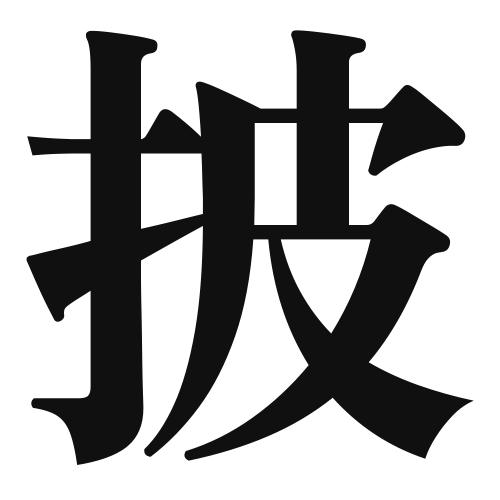1. Overview of Meaning
The kanji “披” (hi) generally means “to unfold,” “to spread,” or “to display.” It is often used in contexts where something is being revealed or shown to others.
2. Formation and Radical
Formation of the Kanji: The kanji “披” is a phono-semantic compound (形声文字), which means it combines both a phonetic and a semantic component. The left part, “扌” (the hand radical), suggests an action involving the hand, while the right part, “皮,” relates to skin or surface, indicating the act of spreading something out.
Radical: The radical of “披” is “扌,” which is associated with actions performed by the hand.
3. Examples of Usage
Common Words and Phrases: Some common words that include “披” are “披露” (hirou – to disclose) and “披肩” (hikan – shawl).
Example Sentences in Daily Conversation:
- 彼は新しいプロジェクトを披露しました。 (Kare wa atarashii purojekuto o hirou shimashita.) – He unveiled the new project.
- 彼女は美しい披肩を着ています。 (Kanojo wa utsukushii hikan o kiteimasu.) – She is wearing a beautiful shawl.
4. Synonyms and Antonyms
Similar Kanji: A similar kanji is “開” (kai), which means “to open.” While both involve revealing something, “開” emphasizes the action of opening, whereas “披” focuses on spreading or displaying.
Antonyms: An antonym of “披” could be “隠” (in), which means “to hide.” This represents the opposite action of revealing or displaying something.
5. Cultural and Historical Background
Relation to Japanese Culture: The kanji “披” is often used in formal contexts, such as ceremonies or presentations, where something significant is being revealed to an audience.
Proverbs and Idioms: One common idiom is “披露宴” (hirouen), which refers to a reception or banquet where a couple reveals their marriage to family and friends.
